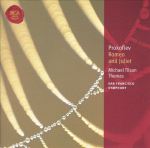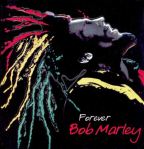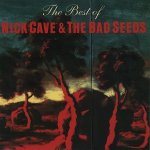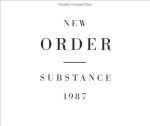Mona Seghatoleslami joins our team of music advisers. Mona announces classical music on WXXI’s Classical 91.5 weekdays from 2pm-7pm. She’s also the host of the lunchtime concert series Live from Hochstein.
Just in time for Valentine’s Day – here are some classical music listening suggestions connected to tales of ill-fated love.
This list covers all bases. If you’re a romantic, these are sweet, yet tragic tales. If you’re spending Valentine’s Day watching horror movies and thinking about tearing up paper hearts, rejoice: nothing good comes of all this romance in the end.
First, some general considerations:
1) Pretty much any tale with “and” in the title involves a tragic pair. Romeo and Juliet. Tristan and Isolde. Daphnis and Chloe. Dido and Aeneas. Pelleas and Melisande. Can you think of any exceptions?
2) A girl coughing in an opera means she’s doomed. This does not stop the tenors from falling in love with these women.
3) If you’re looking for a quick “anti-valentine” fix, might I recommend a collection I just discovered at the library? The Fifty Darkest Pieces of Classical Music
4) Or if you are willing to give love a chance, here’s a collection of Best Romantic Classics.
~Mona Seghatoleslami
Sergei Prokofiev: Romeo and Juliet
I’ve played music for Romeo and Juliet on several Valentine’s Day concerts, which has always struck me as a little creepy. My favorite music for Shakespeare’s tragic young lovers is Sergei Prokofiev’s ballet. There are sweeping and romantic melodies throughout, but the music also has a lot of edge. The section depicting the Montagues and the Capulets is particularly fierce.-M.S.
When Michael Tilson Thomas and the San Francisco Symphony released their version of Prokofiev’s “Romeo and Juliet” a decade ago, critics hailed it as the gold standard among all recorded versions of this music. Even now, there seems no reason to revise that opinion. Choosing from among several available suites prepared by Prokofiev himself, Tilson Thomas shaped a version that is both dramatically and musically complete. He and his orchestra do full justice to the bittersweet lyricism and astonishing emotional range of Prokofiev’s music.-amazon.com
Peter Ilyich Tchaikovsky: Francesca da Rimini
Tchaikovsky also has some beautiful music for Romeo and Juliet, but my Tchaikovsky tragedy of choice is “Francesca da Rimini.” Francesca was a real woman, though her story is mostly known from Dante’s Divine Comedy. She had a forbidden love – but it also seems that she was set up. She was supposed to marry Giovanni, but his brother Paolo stands in for Giovanni at the wedding. Who can blame Francesca for falling in love with Paolo? Giovanni, for one, who murders them. They are then doomed to the second circle of hell, where they whirl in a storm, unable to touch the ground and tormented by the memory of their pleasure and love. At least, that’s how Dante tells it. Tchaikovsky had his own reasons for identifying with tales of forbidden love. This recording by our very own Rochester Philharmonic Orchestra is really nice. (American composer Arthur Foote has also written very pretty music for poor Francesca da Rimini).-M.S.
Richard Wagner: Tristan und Isolde
This opera contains some famously yearning and passionate music, especially in the overture and the final song “Liebestod” (Love-death). It also is an unnecessary tragedy! In short: a love potion mixed up with poison leads to the wrong people falling in love. Tristan, Isolde, and a few others all die in anticipation of King Marke (Isolde’s fiancé) coming to break up the lovers. But it turns out the love potion had been explained to him, and he had been chasing Tristan and Isolde to give them his blessing. Too late! So tragic!-M.S.
It is cold and dark. Solemn winter. Mimi is ill. Yet the sweet strains of love stir still beneath the sombre chords and cyclone fencing. Will love last until the thaw? Yes, yes, of course, but wait, no, still she is ill. And spring? Is it a Promised Land? No, alas, you poor bohemians. She loved and was loved, but now she must—
Securing Ji-Min Park (Rodolfo) and Takesha Meshe Kizart (Mimi) in the leads is an especial coup. Park’s is a remarkably nimble voice, mixing evenly with the rest of the “boys”, only to distinguish itself when needed with a special kind of yearning quality. Kizart is radiant and her evident familiarity with role lends her presence a reassuring serenity.-timeout.com
Here are two of opera’s classic heart-breaking love stories, the kind with the coughing girl who (spoiler alert?) dies in her beloved’s arms. Puccini’s La Boheme is sometimes called the perfect opera (check out my feature with Eastman School of Music’s Benton Hess for a quick intro). Verdi’s La Traviata is a beautiful story of love, the tension between cynicism and idealism, noble self-sacrifice, and tearful tragedy. The DVD I picked here has Rochester’s own Renée Fleming (recent winner of her fourth Grammy). -M.S.
Hector Berlioz: Symphonie Fantastique
Along with yet another version of Romeo and Juliet, this recording features Hector Berlioz’s dramatic Symphonie Fantastique, an obsessive musical realization of Berlioz’s love for Shakespearean actress Henrietta Smithson. The line between real life and fiction in Berlioz’s music (and his memoirs) is a little blurry. He did win Henrietta over, and they eventually got married, and then divorced, but he remained passionately in love with (just like he remained passionately in love with all her other obsessions too.)
In connection with our purpose, Symphonie Fantastique is here because of the fourth movement, “The March to the Scaffold.” Here’s how Berlioz describes his music:
“Convinced that his love is unappreciated, the artist poisons himself with opium. The dose of narcotic, while too weak to cause his death, plunges him into a heavy sleep accompanied by the strangest of visions. He dreams that he has killed his beloved, that he is condemned, led to the scaffold and is witnessing his own execution. As he cries for forgiveness the effects of the narcotic set in. He wants to hide but he cannot so he watches as an onlooker as he dies. The procession advances to the sound of a march that is sometimes sombre and wild, and sometimes brilliant and solemn, in which a dull sound of heavy footsteps follows without transition the loudest outbursts. At the end of the march, the first four bars of the idée fixe reappear like a final thought of love interrupted by the fatal blow when his head bounced down the steps.”
The music is gruesomely graphic in depicting the nightmarish scene. -M.S.
Happy Valentine’s Day!









 Posted by arts
Posted by arts 



















